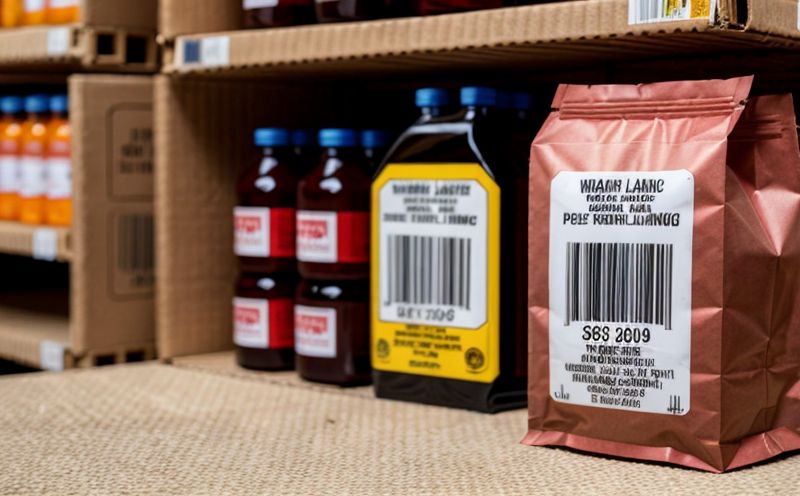Practical Child Handling of Labels and Packaging Evaluation
The evaluation of practical child handling of labels and packaging is a critical aspect in ensuring toy safety compliance with international standards such as ISO 8124-7. This service focuses on assessing the ease of access, durability, and potential risks associated with labels and packaging materials used in toys. The primary goal is to simulate real-world scenarios where children may interact with these elements, thereby identifying any potential hazards that could lead to injury.
Children often explore their environment through touch and manipulation. Therefore, it is essential to understand how different age groups handle labels and packaging components. This evaluation helps manufacturers design safer products by predicting the likelihood of a child pulling off or ingesting small parts from toys. By simulating typical behaviors and interactions, we can identify potential risks early in the development process.
The testing methodology involves creating realistic scenarios that mimic common situations encountered by children when playing with toys containing labels and packaging. These scenarios are designed to reflect various age groups' physical capabilities and cognitive development stages. For instance, younger children might be more prone to putting objects into their mouths due to teething or simply exploring the world around them.
During testing, we use a combination of qualitative observations and quantitative measurements to assess multiple factors including ease of removal, size, shape, material composition, and color contrast against background colors. We also consider how these elements interact with common household items like keys or coins that could be mistaken for food by young children.
Understanding the importance of this service extends beyond mere compliance; it plays a vital role in protecting public health and safety. Regulatory bodies worldwide recognize the necessity of conducting such evaluations to prevent accidental ingestions, choking incidents, and other injuries resulting from improper design choices regarding toy labels and packaging materials.
For quality managers responsible for ensuring product safety throughout manufacturing processes, this service provides valuable insights into potential risks associated with label placement or material selection. Compliance officers can use these findings as part of their efforts to maintain regulatory adherence across all stages of production. R&D engineers benefit from identifying design flaws early in the development cycle, allowing them to make informed decisions about alternative designs that better meet safety requirements.
Moreover, procurement teams gain valuable information on supplier performance by comparing different suppliers’ products against established standards and best practices. This knowledge allows for more strategic sourcing decisions based on reliability and consistency of supply chain partners who adhere strictly to safety guidelines.
Scope and Methodology
The scope encompasses evaluating the practical handling of labels and packaging components by children, focusing specifically on ease of access, durability, and potential risks. To achieve this objective, we employ a multi-faceted approach combining qualitative observations with quantitative measurements.
- Qualitative Observations: We observe how different age groups interact with the specified elements under controlled conditions simulating typical play scenarios.
- Quantitative Measurements: Specific metrics are measured to quantify ease of removal, size dimensions, material properties, and color contrast against background colors. These measurements provide concrete data for comparison purposes.
The methodology ensures comprehensive coverage by addressing various factors that influence a child’s interaction with labels and packaging materials. By incorporating both qualitative and quantitative elements into our assessment process, we obtain an accurate picture of the risks involved in these interactions. This holistic approach allows us to provide reliable recommendations for improving product safety while meeting all relevant regulatory requirements.
Eurolab Advantages
At Eurolab, our commitment to excellence in toy testing is reflected in every aspect of our services. Our experienced team of professionals brings extensive expertise and knowledge to bear on each evaluation project. With state-of-the-art facilities equipped with the latest instrumentation, we offer accurate and reliable results that meet or exceed industry expectations.
Our rigorous quality control processes ensure consistent accuracy across all tests conducted at Eurolab. This commitment to precision and integrity is further bolstered by our ongoing participation in proficiency testing programs recognized globally for their stringent criteria. By adhering strictly to these standards, we maintain a high level of trust among clients who rely on us for accurate evaluations.
Moreover, Eurolab’s global network allows us to stay abreast of the latest regulatory changes and trends affecting toy safety regulations worldwide. This up-to-date information ensures that our evaluations remain relevant and effective in protecting public health and safety.





